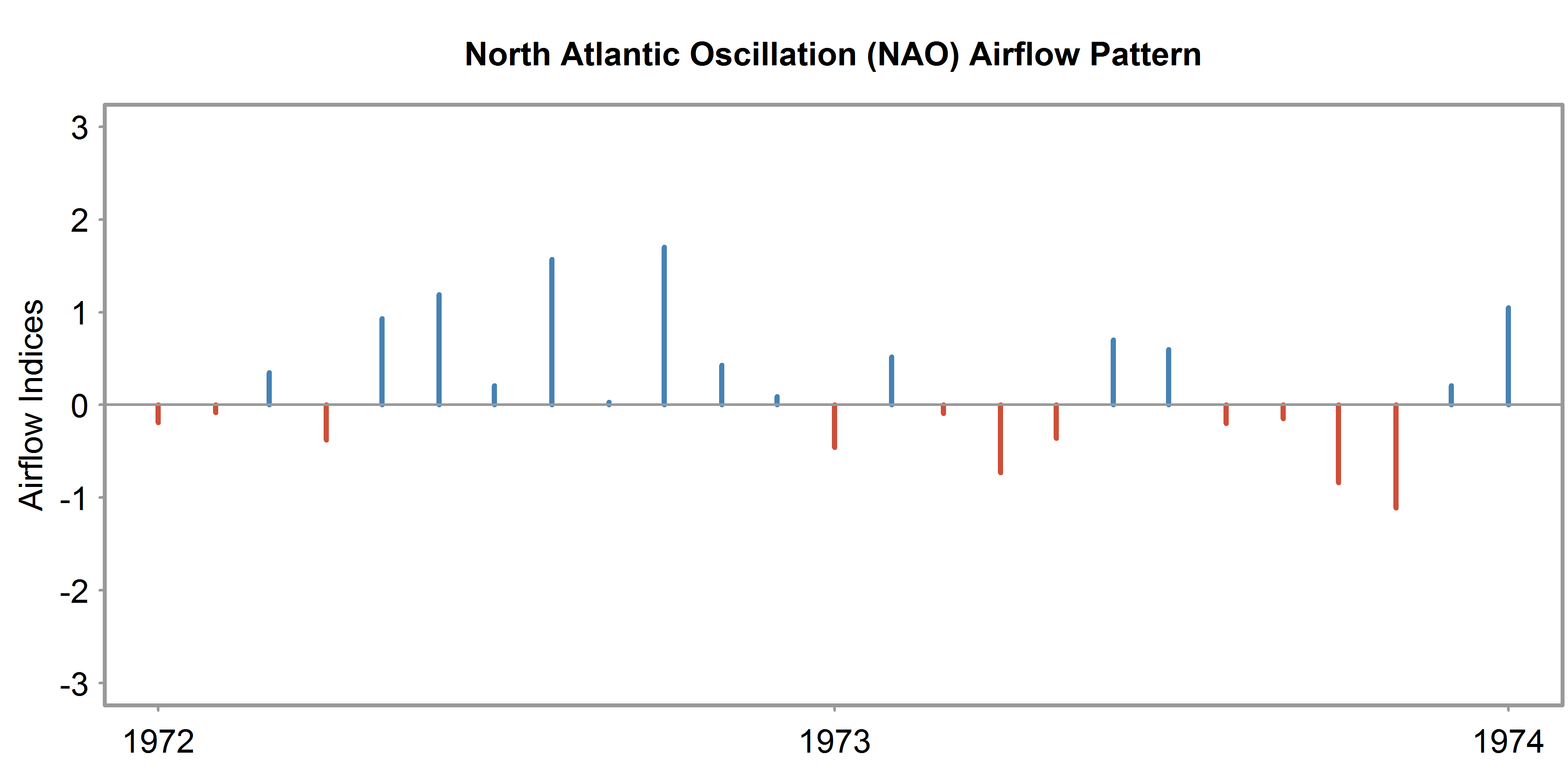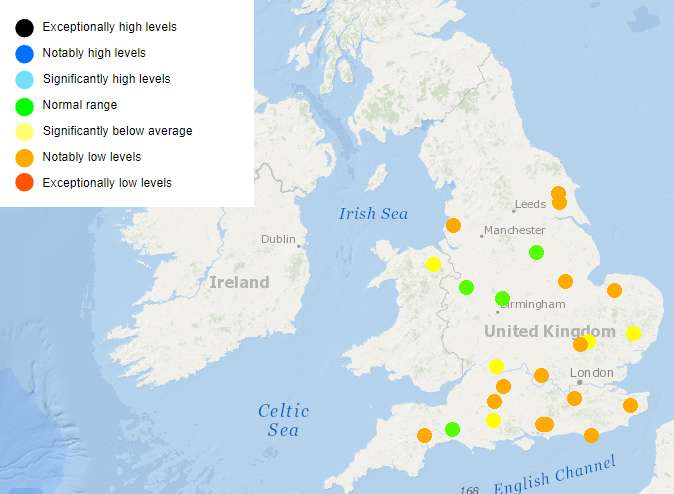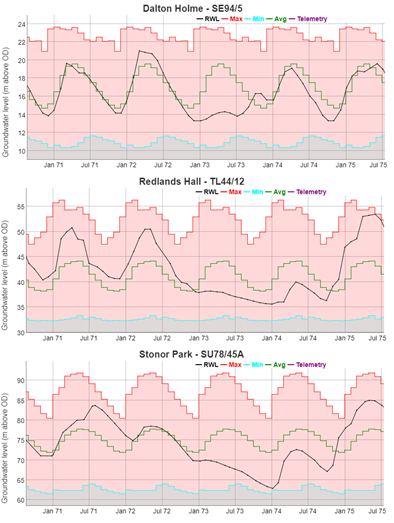Jump to: |
||
 |
 |
 |
 |
July to October 1972 was a dry period, but a rather wetter period followed. Going into 1973, January, February and March were generally dry, and then most regions saw rainfall deficits during June and from August onwards, especially the last three months of the year. Following this, 1974 began with a couple of wetter months. |
The plot below shows the monthly North Atlantic Oscillation (NAO) Index for the periods before, during and after the drought. The NAO is a prominent teleconnection pattern in all seasons, and strong positive phases tend to be associationed with above-average temperatures in northern Europe, whilst negative phases of the NAO tend to be associated with below-average temperatures. There is more information available here.













 |
The 1970s were a tumultuous decade, with several episodes of flow deficits, culminating in perhaps the most famous drought event in UK history, the drought of 1975/76. The early 70s set the stage for this event, a small wave of flow deficits was seen in Scotland in 1971, and later that year, low flows were taking hold in Anglian region. In early 1972 flows were mostly normal with the exception of Anglian region, but very quickly by September the majority of the UK was in severe drought, with significant spatial drought extent lasting until April 1973. |
Severn-Trent region was the least affected area due to some localised rainfall events. Rainfall in July and August relieved some pressures, but deficits returned in autumn/winter of 1973/1974. A wet late winter again returned flows in most areas to normal, though a dry spring caused low flows to return over the summer 1974. This event, though commonly recognised as the 1973 event, actually spanned several years of multiple drought episodes from 1971-1974 and only terminated briefly in the winter of 1974/75 before the next record breaking 1975/76 drought event took hold. When considering 12 month averaged flows, deficits in Scotland began as early 1968 and lasted through to 1974.
The 1973 drought event is ranked quite highly among the events of 1891-2015 due to its periodic nature. When calculated over a 3 month accumulation period, the drought is split into two or three events in Scotland, where it typically ranks within the top 3 events of this 125 year period, and is ranked first in many catchments in East Scotland. This event also ranks highly in some parts of Anglian region where it persisted through 1971-1974. When calculated over a 12 month accumulation period, this event is without doubt the longest event in over the 125 year period 1981-2015 in northern UK, ranking first for all but a handful of catchments. This event also ranks highly in Anglian and southern England, but is less significant in Severn-Trent, south-west England and south Wales. This event is notably intense in east Scotland, ranking within the top 5 events for most catchments, and first for many over a 3 month accumulation period. Over 12 months, this event is ranked the most intense for nearly all catchments in east Scotland. It is also ranked highly in other regions. The mean deficits of this event follow a similar ranking.
 |
The groundwater drought reached a peak in the late summer of 1973 and notably low groundwater levels were recorded in the Chalk and Jurassic Limestone aquifers throughout large parts of lowland England. There was no strong regional focus, although the drought persisted into 1994 at some Chalk sites in eastern England (e.g. Redlands Hall) and the Chilterns (e.g. Stonor Park) due to weak recharge during the winter of 1973-1974. |
Click images to enlarge
 |
 |